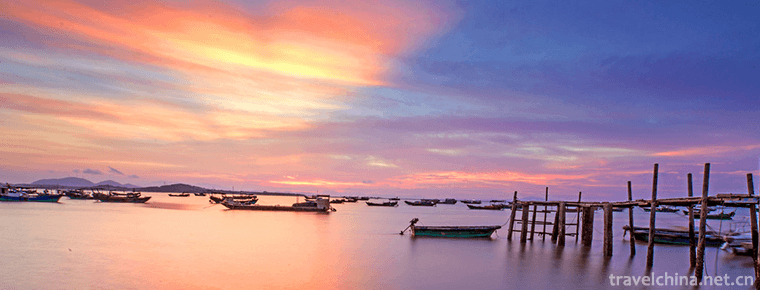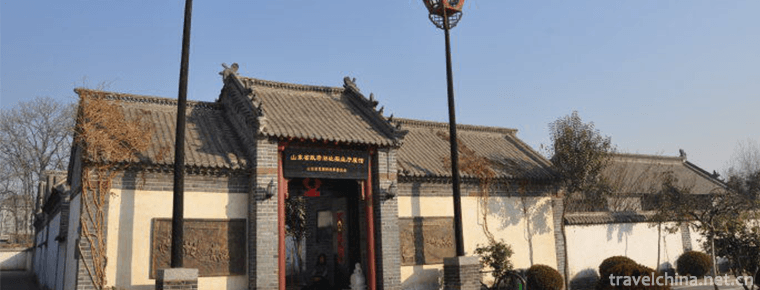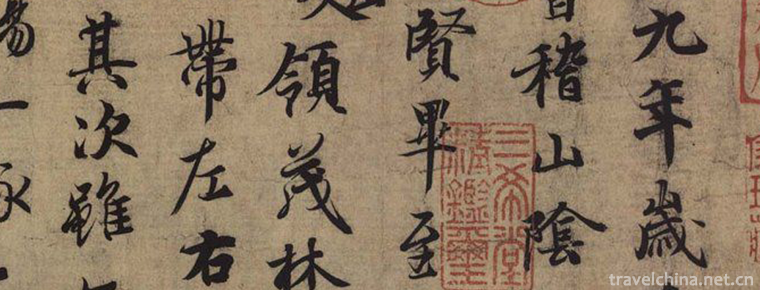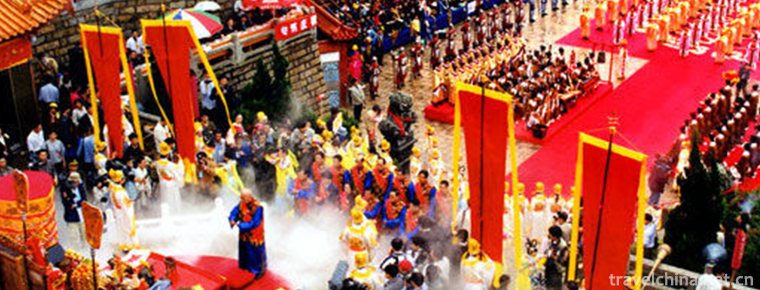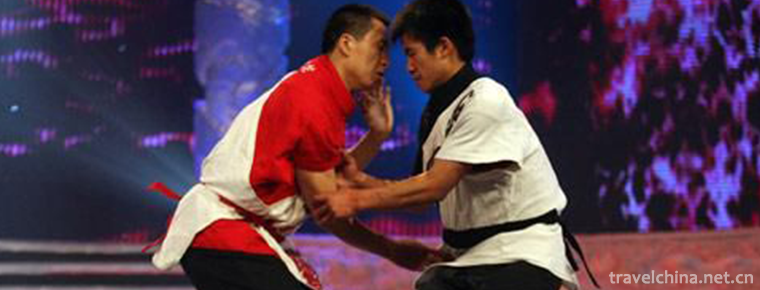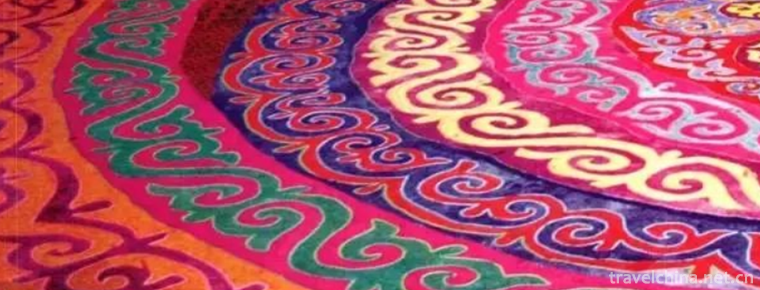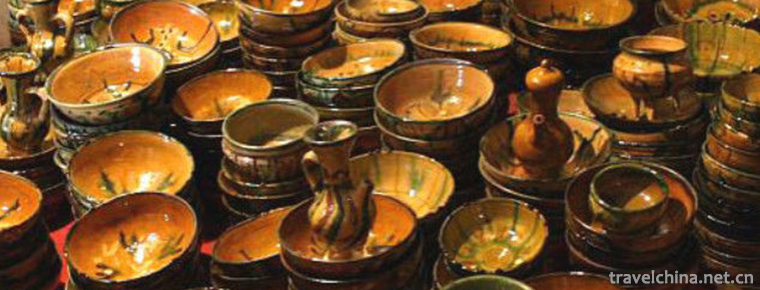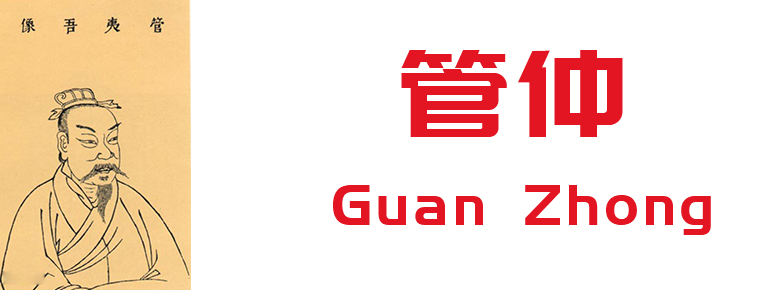Yuan Dynasty Capital City Wall Site Park Yuandadou Chengyuan Site Park
The Yuandu Chengyuan Site Park was built on the Tucheng Site of Yuandu (National Key Cultural Relics Protection Unit, batch No. VI-1). It is located near Mingguang Village, Southern College Road, Haidian District, in the west, and turns northward to Huangting Pavilion and eastward to Madian and Qijia Huozi. National 4A-level scenic spot is a modern urban heritage park with cultural and historical connotations, which integrates the protection of historical relics, the leisure and recreation of citizens, the improvement of ecological environment and disaster prevention and emergency shelter.
As a testimony and material relic of the development of Beijing's urban civilization, the Yuandu Site is an important fact in the study of the changes of Beijing's urban sites, and is of great significance to the exploration and development of Beijing's cultural history. And it is the first humanistic Olympic landscape built in Beijing.
Historical development
From the ancestors of the Yuan Dynasty to the third year of the Yuan Dynasty (1266), Kublai Khan decided to rebuild the new city in the northeast of the former central capital, and began construction in 1267. Take Qionghua Island (now Beihai) as the center to build Palace city, imperial city, altar temple and so on. By the ninth year of the Yuan Dynasty (1272), it was named Dadu. In the twenty-first year (1284), it was completed, with a perimeter of 28.6 km . In the first year of Hongwu Ming Dynasty (1368), after the conquest of Yuandu, the northern city wall shrank about five miles to the south, which is the ruins of the city wall as high as more than ten meters, commonly known as Tucheng.
In 1957, Tucheng was listed as a key cultural relic protection unit by the Beijing Municipal People's Government.
In order to protect the Yuandouyuan ruins, the Tucheng Greening Team was set up in Chaoyang District on September 25, 1974. On March 10, 1988, the Beijing Municipal People's Government formally approved the construction of the park and named it "Yuandouyuan Ruins Park" .
In September 1989, the district government erected a monument on the north side of the west end of Jian'an East Road. The monument is 2.5 meters high, 4 meters wide and 1 meter thick. There are more than 600 words of "Dadu Fu" inscribed on the east side of the tablet, and the inscription of "Yuan Dachengyuan Site" inscribed on the west side of the tablet. The inscription briefly introduces the vicissitudes and vicissitudes of the city wall of the Yuan Dynasty for more than 700 years .
In order to protect the ruins of Yuandou Placanticline and cooperate with the construction of Olympic landscape, Chaoyang District Greening Bureau carried out the overall transformation of the ruins park of Yuandou Placanticline in 2003. The renovated Yuandu City Placanticline Site Park has created four of the largest in Beijing and one of the first in China: the largest urban belt park, the largest outdoor sculpture, the largest constructed wetland and the first pilot park to complete the construction of emergency shelters in Beijing. Therefore, Beijing has become the first city in China to carry out emergency shelter construction and hang the "emergency shelter" sign. It has created a classical garden for Beijing, which is "people-oriented, green as the body, water as the line, history as the soul, and disaster relief".
On May 25, 2006, "Yuandu City Wall Site" was announced as the Sixth Batch of national key cultural relics protection units.
Main attractions
The ruins park of Yuandudouyuan is a narrow strip with a total length of 9 kilometers, spanning Chaoyang and Haidian districts. The five nodes in the park, Jimen Yanshu, Dadu Jiandian, Ancient Yuan Xinyun, Dadu Grand Festival and Longze Yueyue, connect Chaoyang and Haidian sections. From West to east, it shows the development of the city of Beijing for more than 700 years from the Yuan Dynasty to the present.
Haidian section
After the completion of Yuandoucheng Site Park within the boundaries of Haidian District, Yuandoucheng Site Park has ten scenic spots, namely: Chengyuan nostalgia, Jimen tobacco tree, Tieqixifeng, Thistle Fenfeifei, Yinbodeyue, Lagerstroemia, Dadu Canon, Shiguan Xinyi, Anqisheng Age, Yanyun Pastoral .
The "Jimen Tobacco Tree" node is the starting point of the west end of Yuandu Park. The scenic spot is especially beautiful in spring, and spring is also the starting point of a year. The "Jimen Smoke Tree" symbolizes the early stage of the development of the ancient city of Beijing, and implies the bright future of the city with the vigor of spring. According to legend, Tucheng is an ancient Jizhou site, the old buildings and halls are both abandoned, but there are many trees near Tufu in the gate, which is the "Jimen tobacco tree" in the eight sceneries of Yanjing. Existing Qianlong imperial plaque, describing the "Jimen tobacco tree" poems and verses were carved into murals, to increase the humanistic connotation.
Chaoyang section
Yuandudou Chengyuan Site Park (Chaoyang Section) is located on the East and west sides of Beijing Central Axis Road and the south side of Olympic Park. It is the largest belt park in Beijing urban area. It is 4.8 kilometers long and 130 to 160 meters wide, covering 67 hectares. It includes three first-class scenic spots: Yuancheng New Image, Dadu Shengsheng and Longze Yueyue. Six second-class scenic spots include: Shuangdu Tour, Sihai guests and friends, Begonia Huaxi, Anding Shenghui, Shuijie Huadeng and Guyun of Corner Tower .
"Double Capital Patrol" Scenic Spot: The relief wall reflects the scenes of the Yuan Emperor's spring and autumn return and reception by hundreds of officials. While understanding the prosperity of the Yuan Empire, the tourists also know the characteristics of the combination of grassland culture and Central Plains culture, as well as the characteristics of political domination with equal emphasis on both the majority and Shangdu .
"Four Seas Guests and Friends" Scenic Spot: Located on the south side of the Chinese National Park, this scenic spot reflects the political characteristics of Yuan Dynasty, a country open to the outside world, corporals of courtesy and virtue, and countries all over the world come to worship, greet or engage in exchanges. The sculptures of "Qinghua Porcelain", "Arrow and Shield" and "Copper Wall and Iron Wall" on the three sinking horseface squares on the north side of the scenic spot reflect the achievements of the Yuan Dynasty in art and military affairs. "Begonia Huaxi" Scenic Spot: Located on the east side of Panda Ring Island, it is preserved after finishing, repairing and improving. Many kinds of Begonia trees, such as Xifu Begonia, Tiebei Begonia, Venus Begonia, Begonia pendulata and so on, are planted in the scenic spot, which is the largest Begong forest in Beijing urban area.
"Most prosperous" scenic spot: located in the east of Xiaoguan intersection of Anding Road. The "most prosperous" group sculptures and large murals with a total length of 80 meters, together with horses, stone sheep, wooden pavilions and other garden sketches, reproduce the characteristics and outstanding achievements of the Yuan Dynasty in politics, economy, military, science and technology, culture and life, and show the characteristics of rough and heroic grassland culture. They are the largest outdoor group sculptures in Beijing.
"Longze Yuyue" Scenic Spot: At the eastern end of the park, the urban light rail and Xiaoyuehe obliquely intersect to form a triangle land, which resembles a dragon head and covers an area of about 17,000 square meters, forming a natural wilderness wetland park with countryside scenery, and becoming the largest constructed wetland in the urban area of Beijing .
Environment construction
The coverage rate of Yuandu Chengyuan ruins park is 73%, Xiaoyuehe crosses, Henan side is Tucheng ruins protection area, and the north bank is greening scenic spot construction area. Xiaoyuehe River is the main water scenic area, seven aquatic plant areas planted lotus, reed, calamus, scallion and other aquatic plants, built a hydrophilic viewing platform. Along the Xiaoyue River, five wooden cruise ship wharfs and six river-crossing bridges with different shapes have been built to connect the beautiful scenery of different styles on both sides of the river. On shallow water surface, aquatic plants such as iris and scallion are planted .
In Yuandudou Chengyuan Site Park, there are crabapples and flower streams. Xifu crabapple, Tiebei crabapple, Venus crabapple and Begonia verticillata are planted. The Begonia Flower Festival in the park is one of the three major flower festivals in spring in Beijing, which are the Peach Blossom Festival in Xiangshan Botanical Garden and the Cherry Blossom Festival in Yuyuantan Lake. It has been held since 1998. During the event, visitors can listen to soothing background music while enjoying crabapple flowers in the park free of charge. Up to the 15th Begonia Flower Festival in 2012, more than 25,000 varieties of Begonia have been planted in Yuandudou Chengyuan Site Park, which is the largest variety and quantity of Begonia in Beijing.
Traffic routes
By public transport:
1) No. 407 bus, Anzhen Xili, will get off immediately.
2) 653, 409, 380, 849, Te 2, 515 Anzhen Hospital North Station will be there immediately.
3) Beitucheng Station of Metro Line 10 will arrive immediately after getting off the train.
Self-driving route:
1) The North Third Ring Anhua Bridge turns right (eastward) from north to Tucheng East Road and is about 100 meters south.
2) The North Fourth Ring Anhui Bridge turns right (west) from south to Tucheng East Road, about 500 meters south.
The "metropolitan canon" echoes the "metropolitan festival" remotely, reproducing the construction scene and the prosperous scene of the Yuan metropolis .
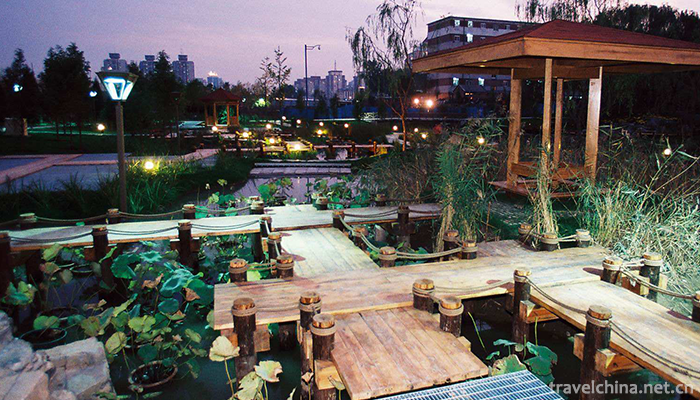
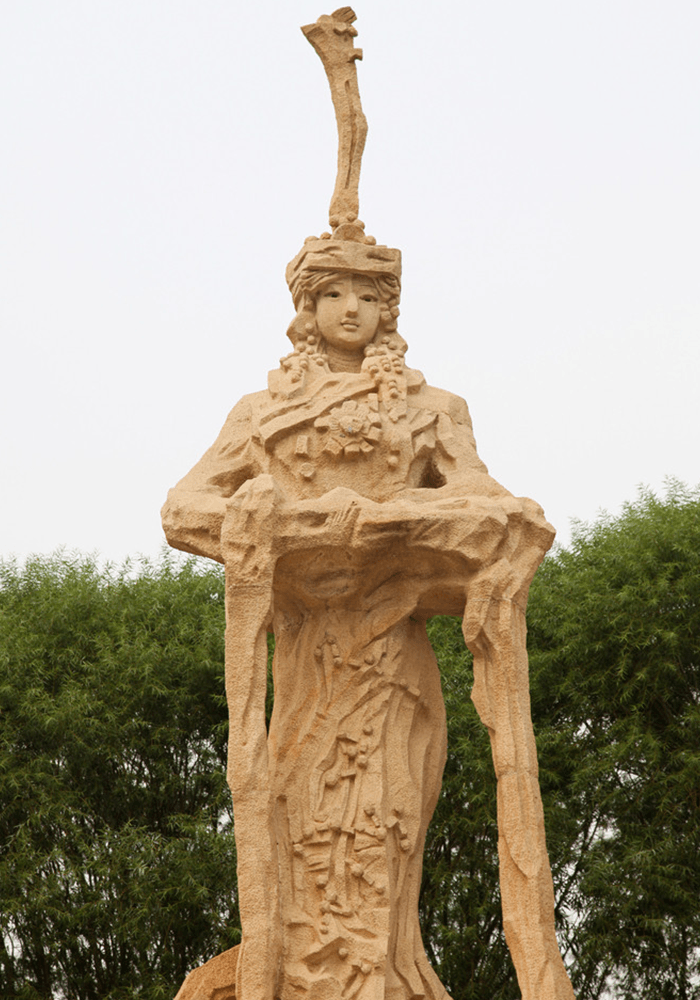
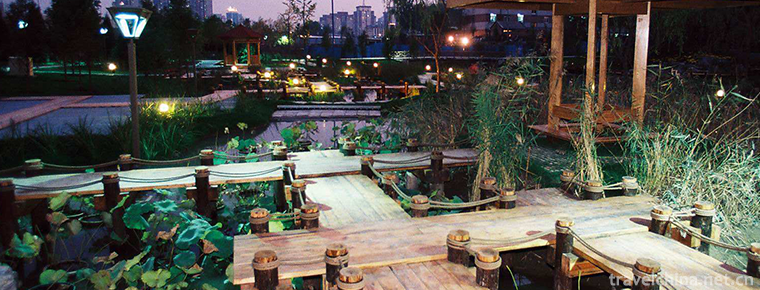
Yuan Dynasty Capital City Wall Site Park Yuandadou Chengyuan Site Park
-
Dajiaowan Scenic Area Hailing Island Yangjiang
Dajiaowan Scenic Spot of Hailing Island in Yangjiang, located in Zhapo Town of Hailing Island in Yangjiang City, Guangdong Province, is a famous national AAAAA tourist attraction
Views: 176 Time 2018-12-12 -
The Old Site of Command of 115 Division of Shandong Province Government and Eighth Route Army
The former site of Shandong provincial government and 115 division headquarters of the Eighth Route Army is the headquarters of 115 division of the Eighth Route Army, Shandong Branch of the Communist
Views: 141 Time 2019-02-08 -
Chinese character calligraphy
Chinese character calligraphy has been recognized by the world for its brilliant civilization of 5000 years and its incomparable rich written records. In this vast and profound history,
Views: 202 Time 2019-05-02 -
Mazu memorial ceremony
Mazu Festival, which originated in Song Dynasty, experienced Yuan, Ming and Qing dynasties and continued to expand and enrich. By the Qing Dynasty, Mazu was named "Tianhou", and the title re
Views: 231 Time 2019-05-15 -
Back to back entanglement
Tongbei Bianquan, also known as Hongdong Tongbeiquan, is a complete and systematic set of traditional boxing. It combines the advantages of both inside and outside. It is divided into mother boxing an
Views: 146 Time 2019-06-21 -
Weaving and Dyeing Techniques of Uygur Felts and Printed Fabrics
Uygur felt, printing and dyeing technology, Xinjiang Uygur Autonomous Region Turpan (now Turpan) local traditional skills, one of the national intangible cultural heritage.
Views: 326 Time 2019-06-26 -
Uygur moulding earthenware firing
Uygur moulding pottery has a history of more than two thousand years. After the middle of the ninth century, Uygur ancestors moved westward to the vicinity of the Tarim Basin, inherited the pottery ma
Views: 208 Time 2019-06-26 -
Guan Zhong
Guan Zhong (about 723 BC - 645 BC) Ji surname Guan Shi, name Yi Wu, character Zhong, posthumous title, Yingshang (now Yingshang County, Anhui) A famous economist, philosopher, statesman and strategist
Views: 220 Time 2019-09-07 -
Science and technology of Panzhihua
In 2018, there were 2865 patent applications in Panzhihua. The output value of high-tech industry reached 53.1 billion yuan, and 2015 science and technology projects were arranged, including 780 high-tech projects, 320 new high-tech projects in that year, and 16 science and technology
Views: 356 Time 2020-12-14 -
Deyang City Construction
In January 2020, the science and Technology Department of Sichuan Province and the provincial development and Reform Commission approved to support Deyang and other six cities to carry out the construction of provincial innovative cities.
Views: 299 Time 2020-12-14 -
Plant resources in Nanchong
There is only one kind of Metasequoia glyptostroboides introduced and cultivated in Nanchong City; there are two kinds of wild protected plants, namely, fragrant fruit tree and narrow leaf pygmy grass, and two kinds of cultivated Ginkgo biloba and Eucommia
Views: 366 Time 2020-12-17 -
Dazhou social security
In 2019, the per capita disposable income of Dazhou residents is 22995 yuan, an increase of 10.1%. The per capita disposable income of urban residents was 33823 yuan, an increase of 9.5%. Among them, salary income was 18783 yuan, an increa
Views: 135 Time 2020-12-20
